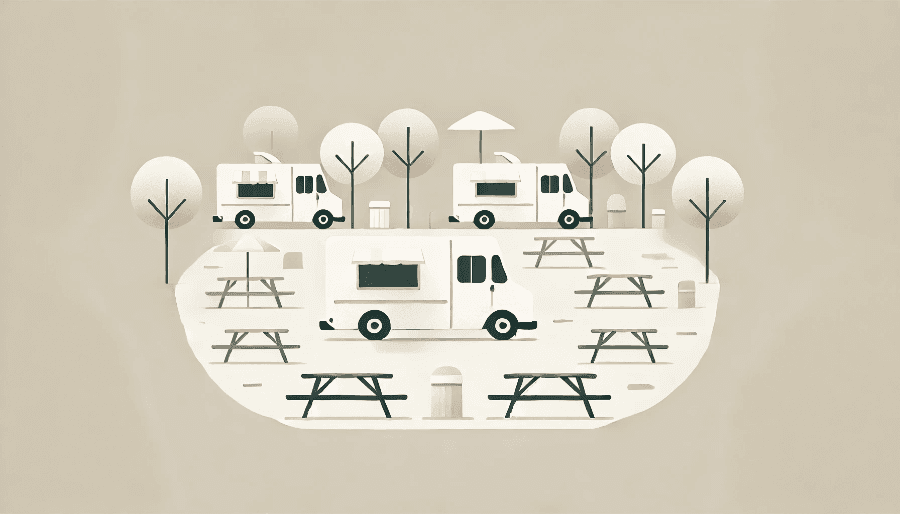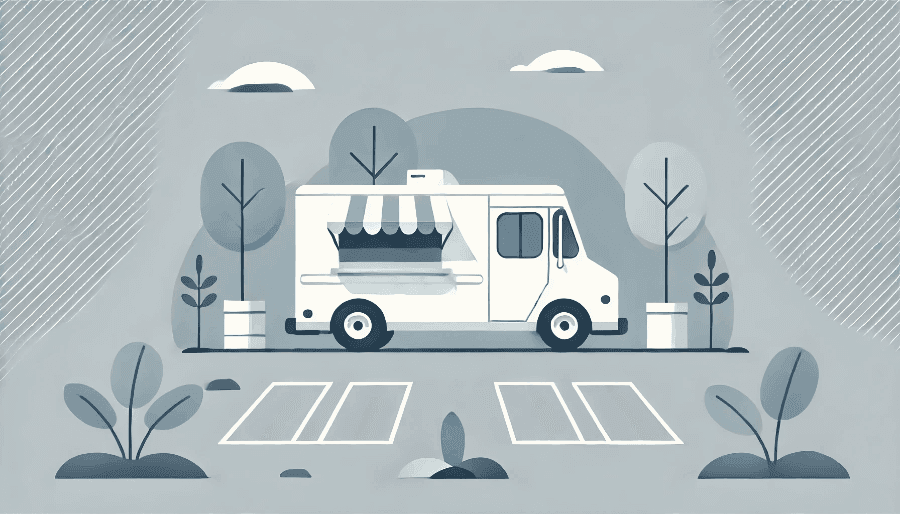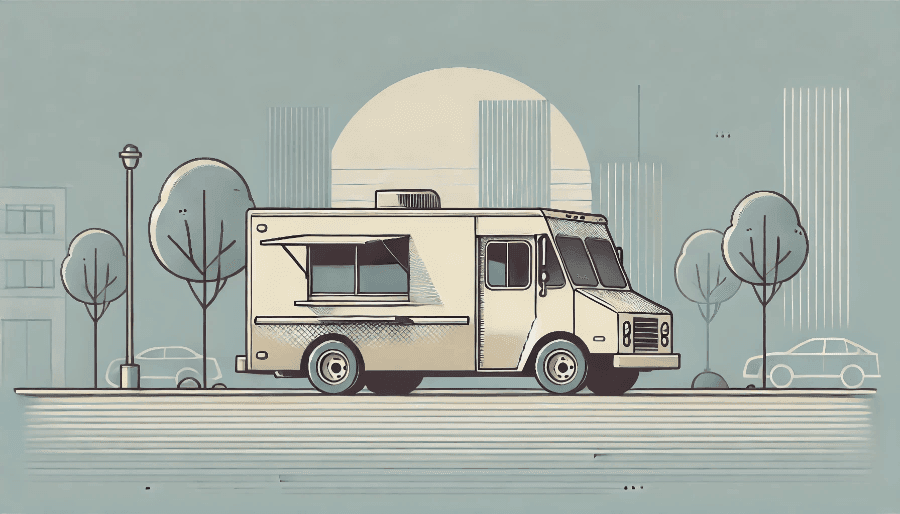 Welcome to the bustling and flavorful world of food trucks! If you're fascinated by the idea of running your own mobile eatery, you're in for an exciting journey. In this blog, we'll dive into the financial side of food truck operations. From understanding potential earnings to calculating food truck profit margins, we're here to guide you through the essentials of food truck economics. Whether you're dreaming of starting your own food truck or already on the road to culinary success, this post will provide valuable insights into making your food truck venture both enjoyable and profitable. So, let's roll up our sleeves and explore what it takes to turn your food truck dream into a thriving business!
Welcome to the bustling and flavorful world of food trucks! If you're fascinated by the idea of running your own mobile eatery, you're in for an exciting journey. In this blog, we'll dive into the financial side of food truck operations. From understanding potential earnings to calculating food truck profit margins, we're here to guide you through the essentials of food truck economics. Whether you're dreaming of starting your own food truck or already on the road to culinary success, this post will provide valuable insights into making your food truck venture both enjoyable and profitable. So, let's roll up our sleeves and explore what it takes to turn your food truck dream into a thriving business!
Understanding Food Truck Economics
The Potential Earnings of Food Trucks
Food trucks have become a popular venture for aspiring chefs and entrepreneurs, but how much do they really earn? On average, a food truck can bring in annual revenues ranging from $250,000 to $500,000, translating to monthly earnings of approximately $20,000 to $42,000. However, these figures can vary widely based on location, menu appeal, operational efficiency, and other factors. It's important to remember that these are gross revenues – the total income before subtracting the costs of running the business.
Start-Up Costs: Investing in Your Culinary Dream
Starting a food truck requires a significant upfront investment. The costs can range from $50,000 to $250,000, depending on the level of customization and the quality of equipment you choose. Key expenses include:
- The Food Truck Itself: This is your most significant investment. A new, well-equipped truck can be costly, but there are also options for second-hand trucks or less expensive builds.
- Kitchen Equipment: Your mobile kitchen needs to be efficient and comply with health regulations. This includes cooking appliances, refrigeration, and storage solutions.
- Licenses and Permits: Costs vary by location, but securing the right to operate legally is essential.
- Initial Inventory: Stocking up on ingredients and supplies to get started.
Besides these, there are unique costs to the food truck business, like the design and branding of your truck, which plays a crucial role in attracting customers.
Running the Show: Ongoing Operational Costs
After the initial investment, there are ongoing costs to keep your food truck running. These include:
- Labor: Hiring and paying staff.
- Goods: Regularly purchasing ingredients and supplies.
- Insurance: Protecting your business from unforeseen events.
- Marketing: Promoting your food truck to reach more customers.
Remember, a successful food truck is not just about great food; it's also about smart business management. In the next section, we'll delve deeper into the profitability and monthly expenses of running a food truck.
Assessing Profitability
The Crucial First Year
The initial year of launching a food truck is both crucial and challenging. Not only do you face the start-up costs, but there are also regular monthly expenses that need immediate attention. These include:
- Truck and Equipment: Your food truck and the kitchen equipment represent the bulk of your start-up cost, ranging from $50,000 to $200,000. This investment is vital for a functional and compliant mobile kitchen.
- Permits and Licenses: Securing the right to operate can cost anywhere from $500 to $1,500, varying by location and the scope of your operations.
- Contingency Funds: It's wise to set aside $20,000 to $250,000 as a safety net for unexpected expenses and to ensure smooth operations, especially during the initial phase when profitability might still be out of reach.
Understanding and managing these initial costs effectively sets the foundation for your food truck's future success. It's not just about getting started; it's about sustaining through the critical first year and beyond.
The Financing Puzzle
Navigating through the first year involves careful consideration of financing requirements. Whether it's through personal savings, loans, or investments, ensuring a steady flow of funds to cover these expenses is key. Remember, even the most well-planned food truck businesses can encounter unforeseen challenges, so having a robust financial plan is essential.
Monthly Operating Costs
Keeping the Wheels Turning
Once your food truck is up and running, monthly expenses will typically consume 85-90% of your monthly sales. This might sound daunting, but it's a normal part of the food truck business. Key monthly expenses include:
- Commercial Kitchen Rental: If you don't have a kitchen within your truck, renting a commercial kitchen can cost around $1,500 per month.
- Parking: Securing a spot for your truck varies greatly in cost, from $500 to $1,000 monthly, depending on your location and the type of spots you're targeting.
- Insurance: This can range from $500 to $8,000 monthly, depending on your coverage needs.
- Utilities: Including gas, electricity, and water, expect to pay about $1,000 to $1,200 monthly.
- Marketing: Investing in marketing is crucial for attracting customers, which might cost between $500 and $5,000 monthly, or 3-6% of your sales.
Balancing Food and Labor Costs
- Food Costs: Typically, these will constitute 30-35% of your sales, which could mean $5,000 to $25,000 monthly.
- Labor: Paying your staff will account for 24-40% of your sales, translating to $2,500 to $25,000 each month.
Remember, your food truck's success hinges not just on great food, but on how well you manage these ongoing expenses. Efficiently controlling these costs is crucial for maintaining healthy food truck profit margins and ensuring long-term sustainability.
In the next section, we'll explore how to forecast your food truck’s sales and use this information to enhance profitability.
Forecasting Your Food Truck’s Sales
Understanding Sales Data
Predicting future sales is a crucial aspect of managing a food truck. Without historical sales data, it can be challenging, but not impossible. Start by analyzing factors such as labor and food costs, inventory turnover, and seating or serving capacity. Consider the following:
- Daily Capacity: Estimate how many customers you can realistically serve each day. This will depend on your menu items' preparation time and the size of your team.
- Seasonal Fluctuations: Sales often vary with the seasons. Identify peak periods in your area and plan accordingly.
- Marketing Reach: The effectiveness of your marketing efforts can significantly impact your customer base and, consequently, your sales.
Making Projections
Utilize any available sales data, even if it's just from a week or a month, to understand your business's performance. From there, you can begin to make more accurate predictions about future performance.
Calculating Average Food Truck Revenue and Food Truck Profit Margin
Determining Average Revenue
The national average revenue for food trucks ranges from $20,000 to $42,000 per month. To calculate your food truck's average monthly revenue, sum up your projected sales for each month, taking into account variations due to seasonal changes or specific events, and divide by the number of months in your operating season.
Understanding Food Truck Profit Margins
Food trucks typically operate with a profit margin of 3-5%, though this can vary. Some may see margins as low as 0% or as high as 15%. To calculate your profit margin, use the following equation: monthly sales x profit margin percentage = monthly profit. For instance, if your food truck averages $40,000 in monthly sales and operates at a 4% profit margin, your monthly profit would be $1,600.
It's important to note that these are averages and actual figures can vary based on your business model, menu pricing, and operational efficiency. Keeping a close eye on these numbers will help you make informed decisions about pricing, costs, and strategies for growth.
In the next section, we'll delve into the specifics of a food truck owner’s salary and how it relates to the overall profitability of the business.
Food Truck Owner’s Salary
Setting Realistic Salary Expectations
As the owner of a food truck, your salary will largely depend on the profitability of your business. Nationally, food truck owners' annual salaries can range from $24,000 to $153,000. However, in the initial stages, most owners reinvest a significant portion of their profits back into the business to fuel growth.
Factors Influencing Owner’s Salary
- Business Role: If you’re involved in day-to-day operations, like cooking or managing, your salary could be a higher percentage of the profit.
- Profitability: The more profitable your truck, the higher the potential salary. However, balancing personal income with business growth is key.
- Investment in Growth: Deciding how much to pay yourself versus reinvesting in the business can be challenging. Strategic reinvestment often leads to long-term success.
The Break-Even Timeline - A Case Study
Bella's Pizza on Wheels: A Hypothetical Scenario
Let's explore the financial journey of a hypothetical food truck, "Bella's Pizza on Wheels", to understand the break-even timeline:
- Initial Investment:
- Truck and Kitchen Equipment: $120,000
- Permits and Licenses: $2,000
- Contingency Funds: $150,000
- Monthly Operating Costs:
- Commercial Kitchen Rental: $2,000
- Parking Fees: $1,200
- Insurance: $3,000
- Utilities: $1,200
- Food Costs: $12,000
- Labor: $10,000
- Marketing: $2,000
- Loan Payment: $5,000
- Total: $36,400
Sales and Profit Analysis
- Product Profitability: Bella’s gourmet Margherita pizza nets $8 per pizza, and her gelato adds $4 per serving.
- Capacity Estimates: With the ability to sell 200 pizzas and 150 gelatos per day, the daily profit is about $2,200.
- Monthly Projections: Monthly Sales (25 working days): $55,000, Operating Expenses: $36,400, Monthly Profit: $18,600.
- Food Truck Profit Margin: At full capacity, Bella’s profit margin is approximately 33.8%.
First-Year Projections and Break-Even Analysis
- Start-up Costs and First-Year Revenue: Total start-up investment: $272,000. Bella’s first-year revenue is approximately $414,000, considering varying monthly capacities.
- Operational Costs vs. Revenue: First-year operational cost (including loan payments) is $436,800, with a revenue of $414,000.
- Break-Even Point: Bella's Pizza on Wheels is projected to break even and start turning a profit in the second year, assuming steady sales growth and efficient cost management.
If you'd like to further calculate your own food truck operation costs, try using our food truck calculator today. In the next section, we'll explore strategies to enhance sales and reduce the time it takes to reach profitability.
Enhancing Sales and Visibility
Strategic Menu and Sales Approaches
- Menu Optimization: Prioritize high-margin items and design your menu to draw attention to these dishes. Employee training on upselling strategies can also boost sales.
- Event Participation: Secure permits for local events and festivals. These are prime opportunities for increased sales and for introducing your brand to new customers.
Expanding Your Reach through Marketing and Location
- Active Marketing: Use social media, your website, and local advertising to engage with the community. A strong online presence can attract more customers.
- Leveraging Food Truck Parks: Parking at a food truck park can be beneficial. These parks often attract regular crowds, provide a sense of community, and can lead to collaborations with other food truck owners. They also serve as reliable locations for your regular customers. At food parks, we partner with hundreds of businesses and food parks with available real estate for food truck vendors to park their trucks and start turning a profit. Explore our available locations today!
Building a Loyal Customer Base
- Customer Engagement: Foster loyalty through programs, consistent social media engagement, and by ensuring top-notch service and food quality.
- Feedback and Adaptation: Listen to customer feedback and adapt your offerings accordingly. This helps in maintaining a relevant and appealing menu.
By implementing these strategies, you can enhance your food truck’s sales, increase your visibility, and solidify your place in the local food scene.
Conclusion
Running a food truck is more than just serving great food; it's about savvy business management. From understanding your initial investment to effectively managing monthly expenses, every aspect contributes to the overall success of your venture. By carefully forecasting sales, optimizing your menu, engaging with customers, you can not only break even but also achieve long-term profitability. The journey of a food truck owner is filled with challenges, but with the right approach, it can also be incredibly rewarding. Are you a food truck owner or aspiring to be one? We'd love to hear your story! Share your experiences, challenges, and successes at hello@foodparks.io. If you found this post helpful, share it with others who might benefit from these insights. Happy trucking!


